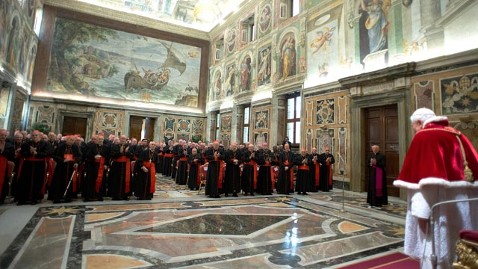President Obama signaled Friday a desire to refocus his attention on second-term priorities, such as immigration and gun control, after weeks of fruitless wrangling with Republicans over his fiscal agenda.
“What I want to try to do is make sure that we’re constantly focused . . . on how are we helping American families succeed,” Obama said at a news conference after failing to strike a deal with congressional leaders to avert $85 billion in mandatory budget cuts.
“Deficit reduction is part of that agenda, and an important part, but it’s not the only part,” he said. “And I don’t want us to be paralyzed on everything just because we disagree on this one thing.”
For a president who has bemoaned Washington’s penchant for lurching between self-manufactured political crises over the past two years, the inability to compromise with Republicans appeared to leave him simultaneously exasperated and emboldened.
Though he had run out of ideas on how to get Congress to support his plan on taxes and spending — “What more do you think I should do?” he asked a reporter — Obama sounded an upbeat note on other initiatives, including raising the minimum wage, expanding preschool programs and changing voting laws.
“There are other areas where we can make progress,” he said. “This is the agenda that the American people voted for. These are America’s priorities. They’re too important to go unaddressed.”
The president’s tone came as a relief to advocates who have fretted that the ongoing fight over the deficit would drain attention and critical momentum from Obama’s promise to champion reforms to gun control and immigration laws.
Though Obama touched on both during his State of the Union address Feb. 12, the last event he dedicated solely to gun control was a Feb. 4 appearance at a Minneapolis police station, and on immigration it was a Jan. 29 speech at a Las Vegas high school.
In the meantime, the administration has tried to remain engaged via less high-profile means. Vice President Biden made policy speeches and met with advocates on gun control, and Obama used phone calls to Capitol Hill and a private Oval Office meeting with two Republican senators to push quietly on immigration.
“There are plenty of issues Congress needs to be getting to,” said David Leopold, an executive committee member of the American Immigration Lawyers Association. “Manufactured crises like the ‘fiscal cliff’ or sequester do not advance anyone’s agenda, least of all the American people’s agenda.”
Advocates acknowledged that the White House’s decision to focus on the economy made sense in light of polls showing Americans overwhelmingly believe that jobs and growth should be Obama’s top priority. But they have learned from experience that momentum for their causes can disappear quickly.
Obama promised comprehensive immigration reform in his first term but pursued a major health-care overhaul that ate up his political capital and the administration’s attention. He gave a much-heralded speech about gun violence after the mass shooting in Tucson, Ariz., in January 2011 that wounded former representative Gabby Giffords (D), but no changes to gun laws followed.
Obama has “got to be an effective spokesperson on [gun violence] to do a good job, but the minute he changes focus from the economy, everybody goes bananas,” said Matt Bennett, a senior vice president at Third Way, a think tank that supports stricter gun control. “That puts him in a bit of a bind.”
On Capitol Hill, a bipartisan coalition of senators is working on legislation that would require mandatory background checks for all private gun sales, closing a long-standing loophole. The bill hit a snag after Sen. Tom Coburn (R-Okla.) opposed adding language to the bill that would require gun owners to keep transactional records of private firearms sales.
Another bipartisan Senate group is drafting a comprehensive immigration bill that would likely include a path to citizenship for the nation’s 11 million illegal immigrants. Senators said they hope to produce a draft in March, but the bill could be delayed until after the Easter recess, which runs through April 5, several sources said.
In a pointed reminder of the difficulty of engaging on more than one issue at a time, Sens. John McCain (R-Ariz.) and Lindsey O. Graham (R-S.C.) were late to a meeting with the bipartisan immigration group last week because they were on the Senate floor blasting Democrats over the mandatory budget cuts. Only after their floor speeches ended did the pair join their colleagues for more cordial discussions.
On Friday, even as he bemoaned the lack of GOP cooperation on the spending cuts, Obama made a point to praise the Republican-led House for approving a renewed Violence Against Women Act this week.
“What I’m going to keep on trying to do is to make sure that we push on those things that are important to families,” Obama said. “We won’t get everything done all at once, but we can get a lot done.”
Rosalind S. Helderman contributed to this report.
Discuss this topic and other political issues in the politics discussion forums.
 Air Force Training. At a briefing Friday, Deputy Defense Secretary Ashton Carter warned that "effective immediately, Air Force flying hours will be cut back."
Air Force Training. At a briefing Friday, Deputy Defense Secretary Ashton Carter warned that "effective immediately, Air Force flying hours will be cut back."










